How To Use A Medium Format Camera
One of the big reasons many photographers become into picture photography is for medium format. It'southward no secret that medium format cameras produce the highest-resolution and quality images on film.
Before recent digital advancements, getting a digital camera that could compete with medium format film would easily price over 50,000 USD (earlier factoring in lenses).
Those times are changing, with some 35mm cameras easily beating even medium format in terms of resolution and dynamic range. Merely at that place's withal something romantic nigh medium format that keeps photographers coming back to (and drooling over) these cameras.
In this guide, we're going to go over everything there is to know about medium format cameras. Including how to choose your first medium format camera, what kind of film to buy, and perhaps a couple of reasons why you may wish to stick with 35mm.
I've used a number of medium format cameras over the years, having used them for personal and professional person photography.
There are many things to beloved nigh medium format, only it's not all roses. I'grand not going to wax poetic and say information technology'south the perfect choice for everyone — at that place are still many times when 35mm cameras are the best option.
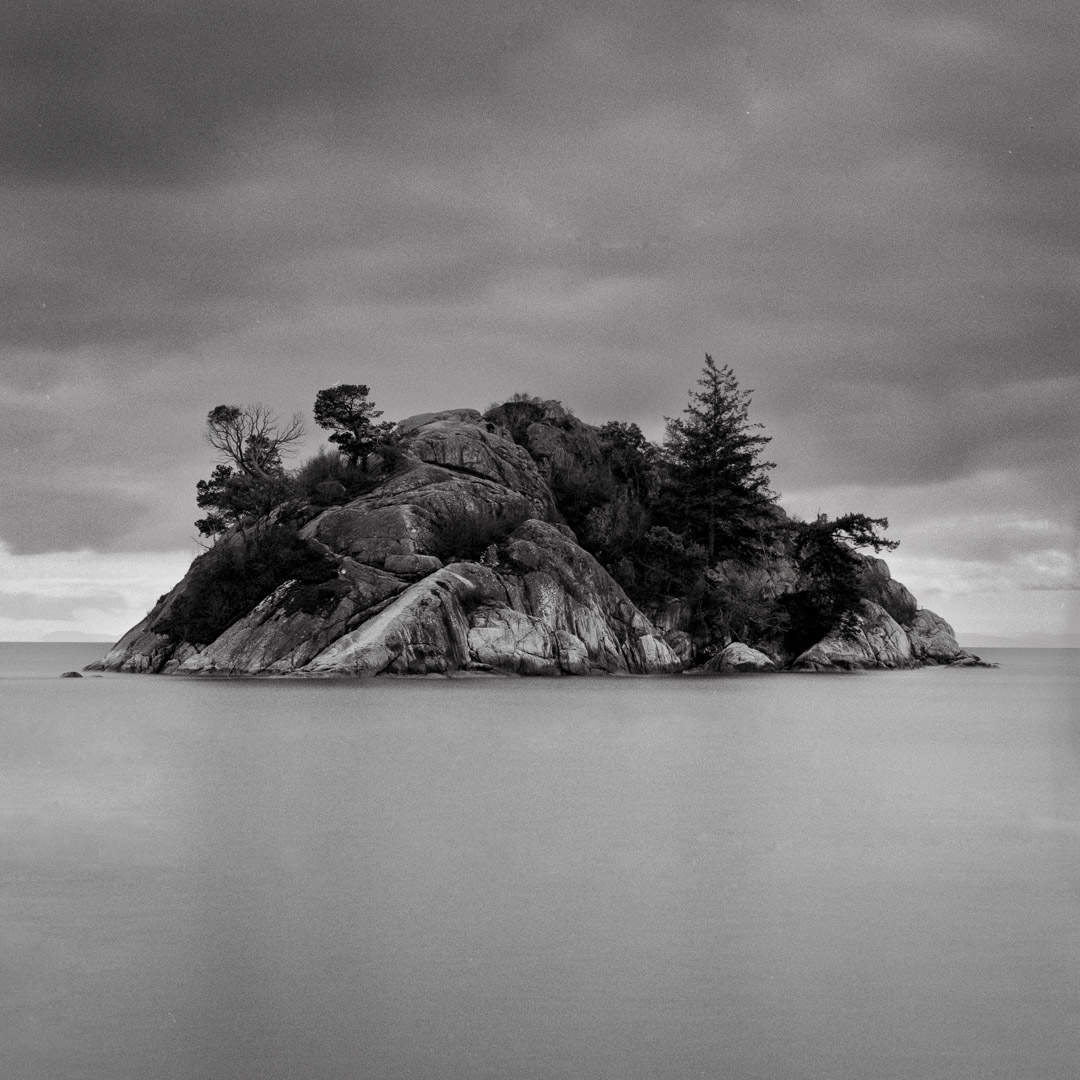
What is medium format?
There are four master film sizes that are available to film photographers.
The smallest is 110 film, which is for tiny picture cameras that get popular in the 80s and 90s. Because of their small form factor and cheap film, many people had 1 of these cameras in their glove box in instance of a car accident. The only manufacturer currently making 110 film is Lomography.
The next size up is 135 moving picture, better known every bit 35mm. This is the movie you know and love with the sprocket holes on the sides. This is the most pop motion picture format because of the size and the quality cameras that were made for it. You'll find 35mm all earth.
The next size is Medium Format, also known as 120 moving picture. Medium format is a 6cm (2 ¼ inch) wide film that was designed to capture equally much detail every bit possible in a convenient roll format. A single square format image on 120 film is nigh the same size every bit 3 35mm images combined.
The largest film type is just called large format. Large format film is sold in sheets that can exist any size between 4×5 inches to even xvi×xx. These formats are still fairly popular because of the incredible depth of field and resolution they capture. But big format cameras are big, heavy, slow to use, and the moving-picture show can toll more than $ten for a single image.
A unmarried viii×10 canvass has the same surface area as a roll of 120 film, which has the same surface expanse equally a curlicue of 35mm. And they are all priced accordingly.
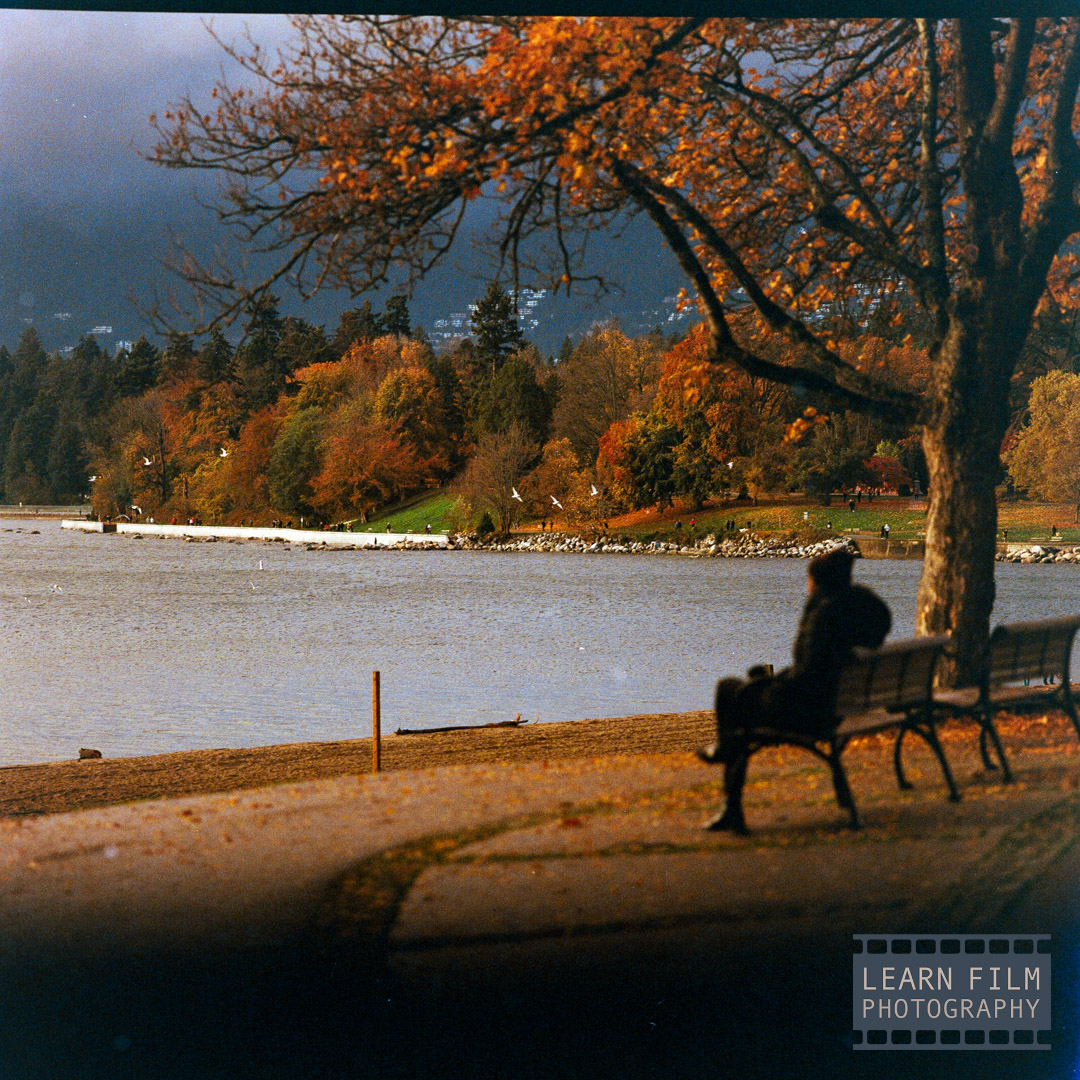
Why shoot medium format movie?
There's an former joke, that with digital photography, you lot'll accept 2,000 photos and vi shots will be awesome. With 35mm pic, you'll take 36 images and six will exist awesome. With medium format, you merely get 12 photos, but six of them are still going to be fantastic. And there are a number of reasons why.
For one, shooting with larger negatives means you can print larger images without losing detail, or without seeing excessive graininess. Even so, that's less of a business concern in the digital historic period when it'due south rare to create prints in the darkroom.
Besides, considering the negatives are so much larger than 35mm, they have a much amend exposure latitude. The negatives collect more than low-cal and produce images with near-perfect tonal rendition. 35mm film looks contrasty and grainy compared to medium format films, which accept smoother tones and create a sharper prototype overall.
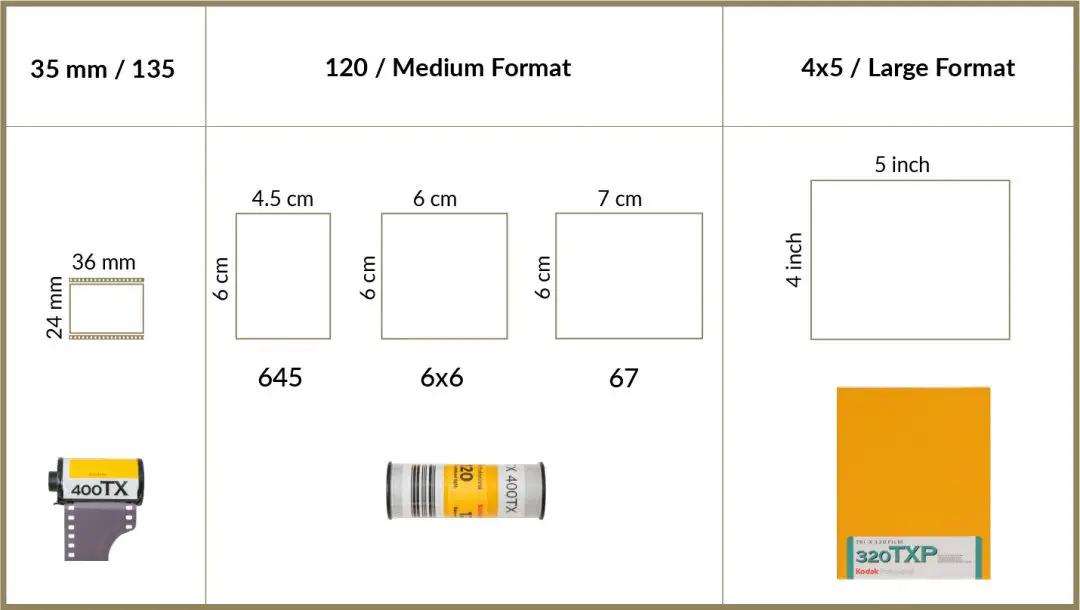
Medium format film sizes
At that place are three main formats for medium format motion-picture show cameras. 645, 66, and 67. All of them are the same height, simply just have different widths of motion-picture show, just like the 35mm movie cameras that shoot half-frame images.
It'due south important to note that every medium format camera volition utilise the aforementioned 120 pic, regardless of the film format that it shoots in.
Some cameras, like the Holgas, can even take a mask in place that allows them to shoot more frames in a smaller format. Cameras with changeable backs also typically had dissimilar backs available to allow the user to choose their image format. Hasselblads and RZ67 cameras, for example, can both shoot in 6×six or 645 formats, still but the RZ67 tin can shoot using a 67 back.
6×vi or square format is the virtually common. A 6×6 camera gets 12 shots per roll. All TLR cameras, Hasselblads, Kievs, and any camera that doesn't take either a 645 or a 67 in the name shoots square format images.
The next near popular format is 645, which is a mainstay for nuptials and portrait photographers alike because it allows yous to squeeze out three or 4 extra shots per scroll of picture show when compared to six×6. The 645 format attribute ratio is also the closest to the 35mm format.
In that location are also plenty of high-quality 645 cameras on the market, like the Zenza Bronica ETR line, Mamiya 645, Pentax 645, and Contax 645AF.
67 is the largest popular medium format film size. These cameras are prized for the larger film formats, but can only accept 10 photos per whorl of pic. Studio shooters in particular are the biggest fans of the format because of how much larger they're able to make prints.
In that location is i other larger format, which is 6×9. Although very few cameras use vi×9 format, because they require progressively larger camera bodies and lenses to create, which means smaller apertures and fewer lens options.
Medium format crop factor and depth of field
The next advantage to come from the size is that images have more pleasing out-of-focus areas, also known as bokeh. Because of the larger image plane, a medium format camera tin can create more than bailiwick separation than a 35mm camera tin can with the same aperture.
For example, a lens with an f/four aperture in half dozen×vi format can capture every bit much background mistiness as an f/two.2 lens aperture on 35mm film. This look is prized by portrait, fashion, and wedding photographers.
Ingather factor too changes the fashion focal lengths work. Medium format moving-picture show photographers will detect that equivalent focal-length lenses look much wider on 120 moving picture cameras than they will on 35mm moving picture cameras. This tin can be a major benefit because it ways that wider lenses will have less distortion, which tin create straighter architectural lines and more flattering portraits.
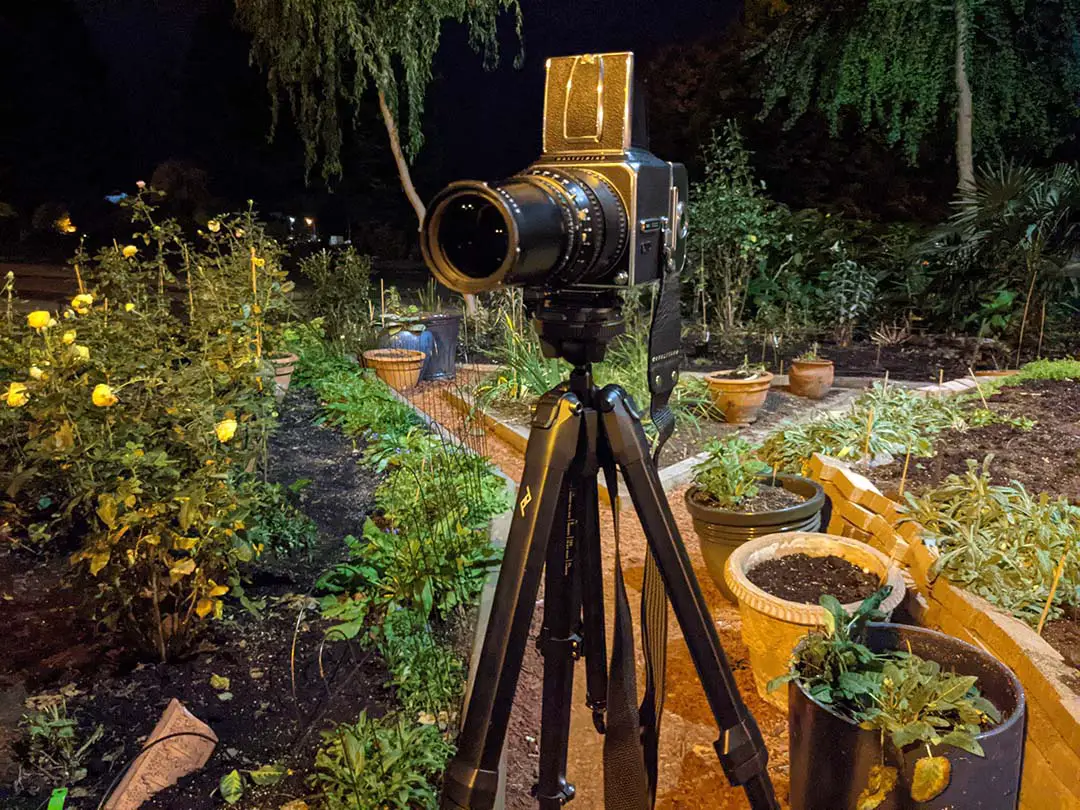
Focusing with a medium format camera
These cameras also take large, vivid focusing screens that make manual focus an accented pleasance. Plus, I don't know why this is, only in that location'due south merely no cooler way to view the world than through an acute matte screen of a Hasselblad camera.
For professionals, medium format film cameras are a dream to piece of work with. The biggest problem most photographers have with 35mm pic cameras is the size of the focusing screen. It can be hard to know when your subject is perfectly in focus on 35mm. But the large, vivid medium format screens brand capturing sharp images a cakewalk — even at night.
Grain size, sharpness, resolution, and dynamic range
There are a number of considerations when shooting picture. No affair which format you use, the film grains will be the aforementioned size. The incredible HP5 movie is exactly the aforementioned, no affair which format y'all utilize.
The simply departure is the size of the image that is created on top of those grains.
A medium format image will contain many more grains than the aforementioned prototype taken with a 35mm picture camera. That ways the grains will appear smaller because there are more of them in an equivalent section of the epitome. This is called resolution.
Medium format flick photographs accept 3x the resolution of 35mm. And with that extra resolution comes many benefits. Higher resolution images are sharper, accept better gradation between the tones (something that you lot really notice in B&W moving picture).
The just other cistron that remains constant betwixt the formats is dynamic range. Medium format film has exactly the same dynamic range as 35mm because the lite-gathering ability of the grains themselves do not change with motion-picture show size.
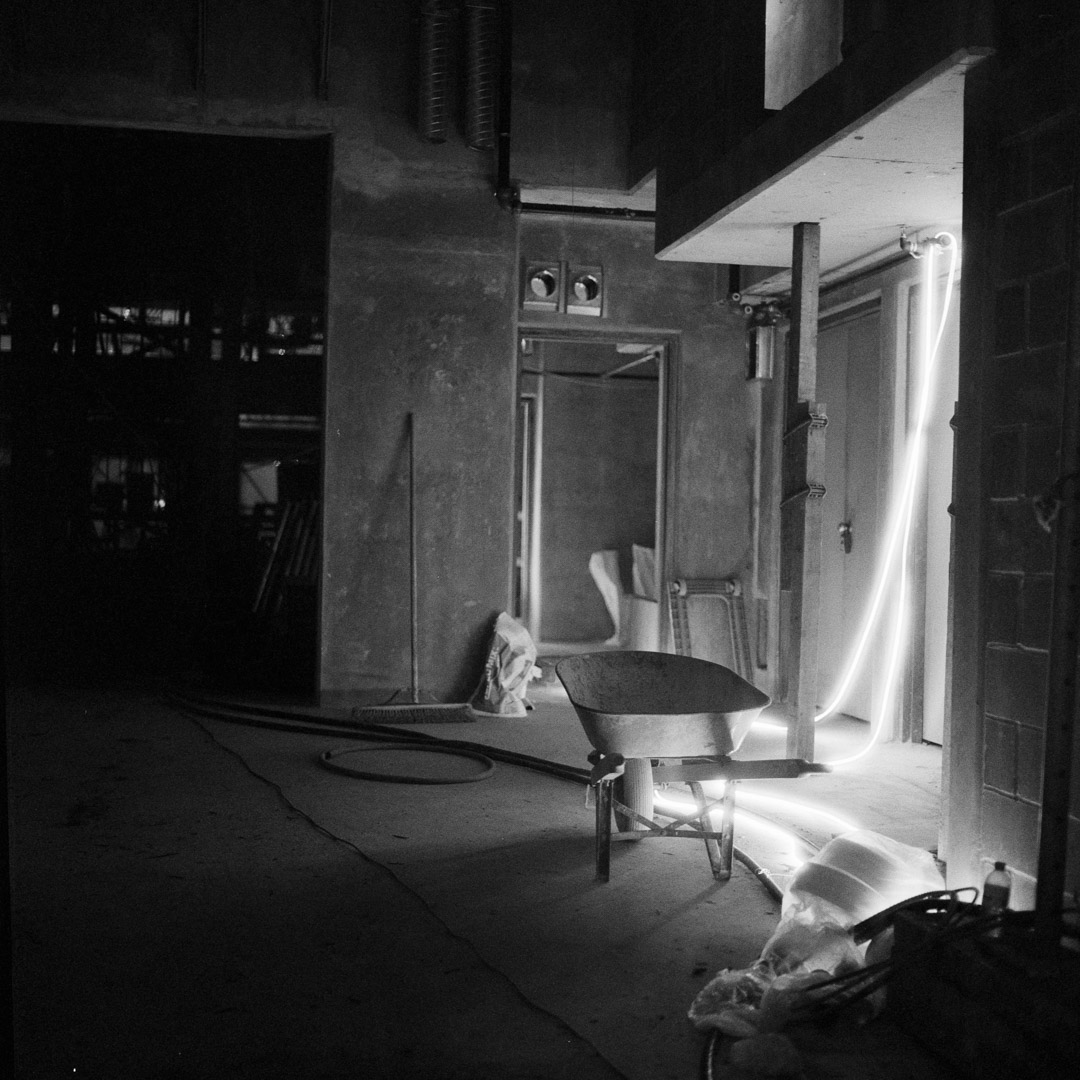
Tin can digital cameras compete with medium format picture show?
The digital globe spent almost 20 years trying to match what medium format film is capable of. Information technology's safe to say that digital medium format cameras are better™ than film. Realistically, they practise create better images than moving-picture show, they shoot faster, focus better, have higher resolution, and capture colors more than realistically.
I am manifestly a big fan of film. I created this weblog to aid new motion-picture show photographers get the best information possible. I'd learned film photography from the forums, where a lot of bad information has proliferated and fabricated me run into mistakes.
But I tin't in proficient conscience say that medium format film photography is the ultimate photographic medium in terms of epitome quality. Large format still beats them all through and through. Though, I guarantee that consumer digital cameras volition become better over fourth dimension.
We choose the medium we choose for many unlike reasons. One reason is the quality of the images we capture and the feel of the medium. And another big one is price. Because even if you tin easily beget a new mint condition Leica M6 and a Noctilus lens, that doesn't hateful you lot could beget a digital medium format camera without remortgaging your house.
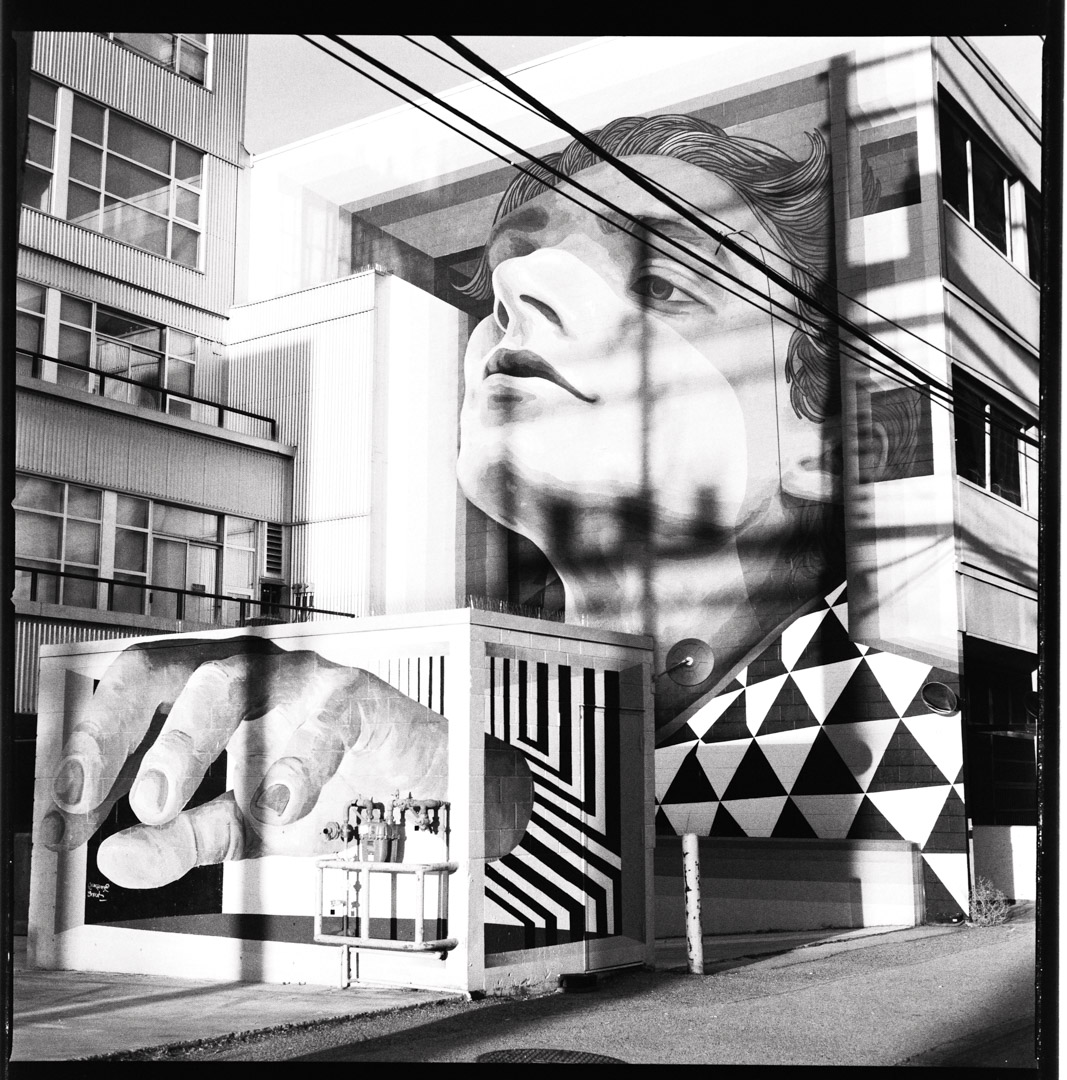
What are the downsides of using medium format picture cameras?
In this part of the guide to medium format photography, I'chiliad going to give reasons why you probably don't need or desire, a medium format camera. Unlike film, nothing is ever blackness and white. There will e'er be more to any decision than just one or two factors.
I've had multiple medium format cameras over the years, and they have all served me well. Only at that place are a few existent and distinct downsides to these cameras that I have personally experienced.
If you lot're looking for reasons to avoid putting your hard-earned coin into a medium format moving picture camera, this is the department you will desire to read. Permit's kickoff with the cost.
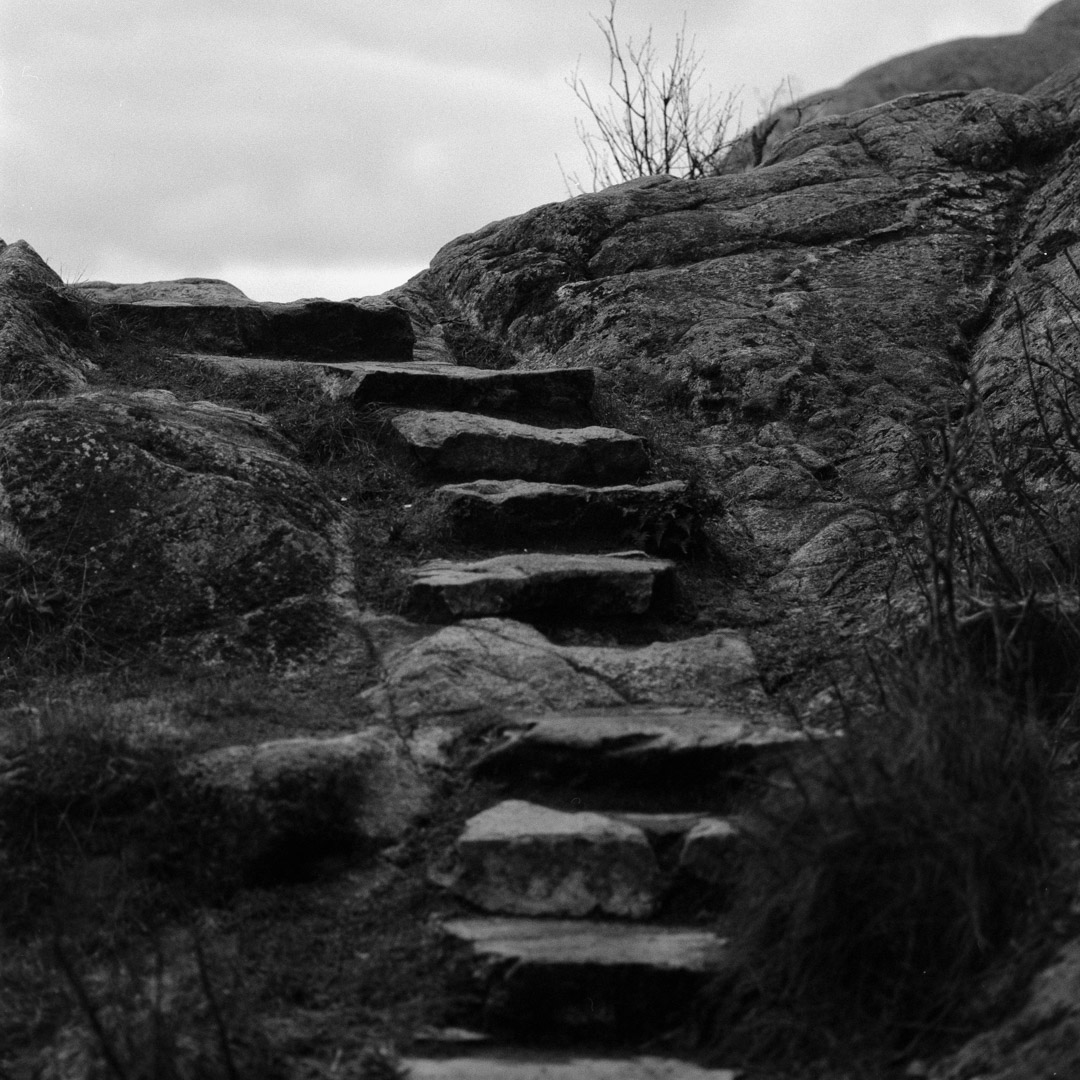
How much does medium format film photography cost?
First and foremost, medium format photography is expensive. A good medium format photographic camera, like a Yashica or Rolleicord TLR (Twin Lens Reflex) will toll betwixt $400 and $500. And the prices only go upwardly from in that location.
People are picking up these cameras for professional photography uses again, so information technology'due south no cloak-and-dagger that the prices are going up closer to where they used to exist when moving picture was the simply way to take photographs.
When it comes to the moving picture itself, a single roll of color 120 motion-picture show starts around $ten, depending on where you are in the world. Lomo Color Negative film is the cheapest at effectually $25 for a iii pack in the United states (the cheapest film market place), but Portra 400 tin fetch $60+ for a five pack, or $one per 6×half dozen shot.
Fuji, unfortunately, doesn't make medium format film anymore, and then the options take become more limited since 2021.
Developing and scanning motion-picture show professionally so costs between $10 and $25 per ringlet, depending on the quality of the scan.
Alternatively, you can do this at home for much cheaper in the long run, simply developing and scanning a single whorl can take an 60 minutes on a proficient day. Longer if you lot're using a flatbed scanner like the Epson V550 or V600.
A complement of B&W film chemicals or a C41 color negative film developing kit will cost around $30. The C41 kit develops 8 rolls, while the B&W chemicals can develop anywhere between 10 and 100 rolls depending on dilution, shelf life, and other factors.
So the total price per photograph varies anywhere from $1.20 on the low finish (if you dev+scan yourself) and $3. It doesn't audio similar much, but the costs do add together up over fourth dimension.
In contrast, a roll of 36-exposure 35mm flick can cost anywhere from $.40 to $1 per shot. Just 35mm film prices can vary far more than medium format.
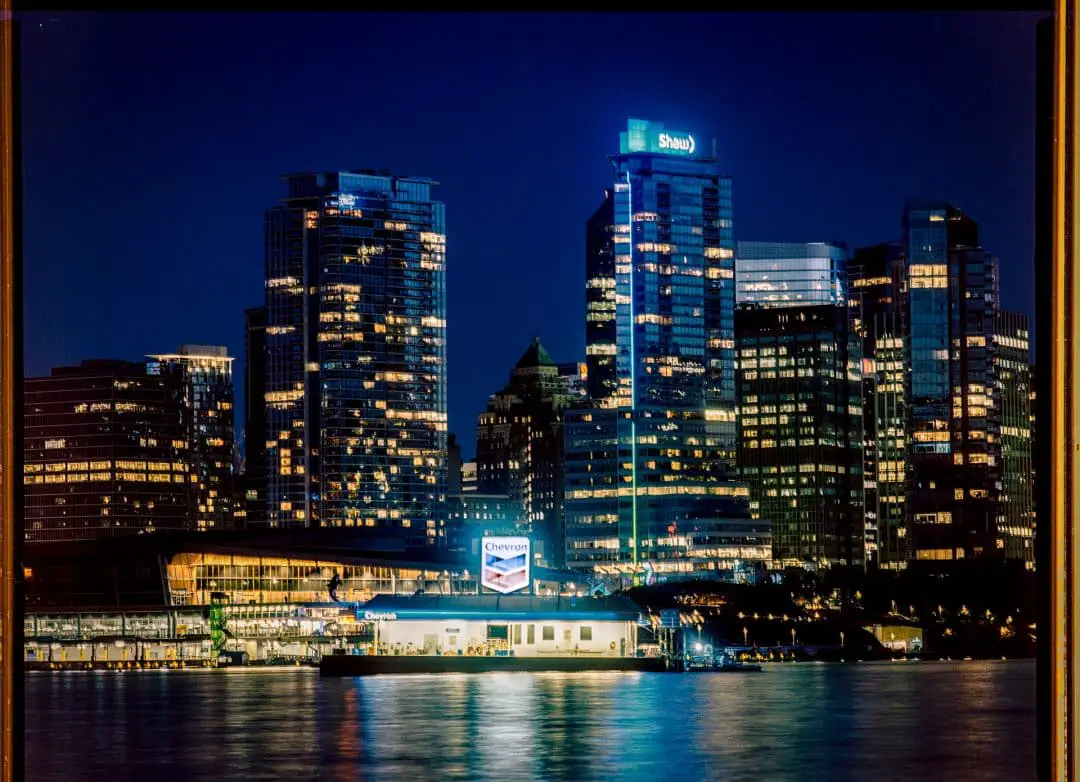
Are the costs of medium format worth it?
If you are conscientious with your photos and yous truly love the medium format experience, then yes, it is easy to justify those costs.
For clients, the mystique around medium format film photography can likewise be a selling betoken. Equally a manner, lifestyle, portrait, or wedding photographer, yous tin utilize the camera to marketplace your piece of work.
Some major clothing brands have also switched exclusively to shooting on film to market their habiliment as cool or hip.
This kind of work can easily justify the cost. The client pays for the moving-picture show and meridian-terminate film processing anyways.
But for a typical, everyday moving picture shooter, that might not exist so easy to swallow.
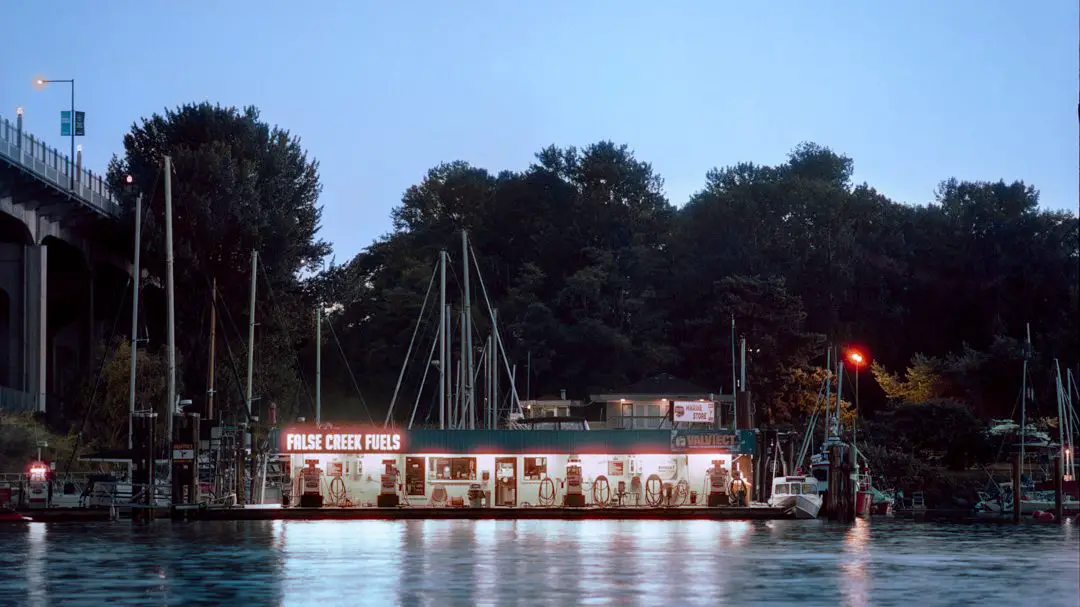
Is medium format picture show relevant in the digital historic period?
In the digital age, we are limited past the resolution of the scanner and the ways in which we display images online. Large film formats don't provide that much more detail over a 35mm film scan.
And the reason for that is unproblematic. Most people — photographers and clients inclusive — only want images for Instagram or their websites.
Instagram only requires 2048px broad images at the most or 3 megapixels. On this website, to go on the pages loading fast, I use images that are 1080px in width, which is just 1 megapixel. A well-exposed 35mm film format epitome can easily cover that space without actress-noticeable grain.
The only time medium format quality matters to me is when I print my images in the darkroom. And even so, I don't fifty-fifty notice the grain from a 35mm negative on an viii×x impress.
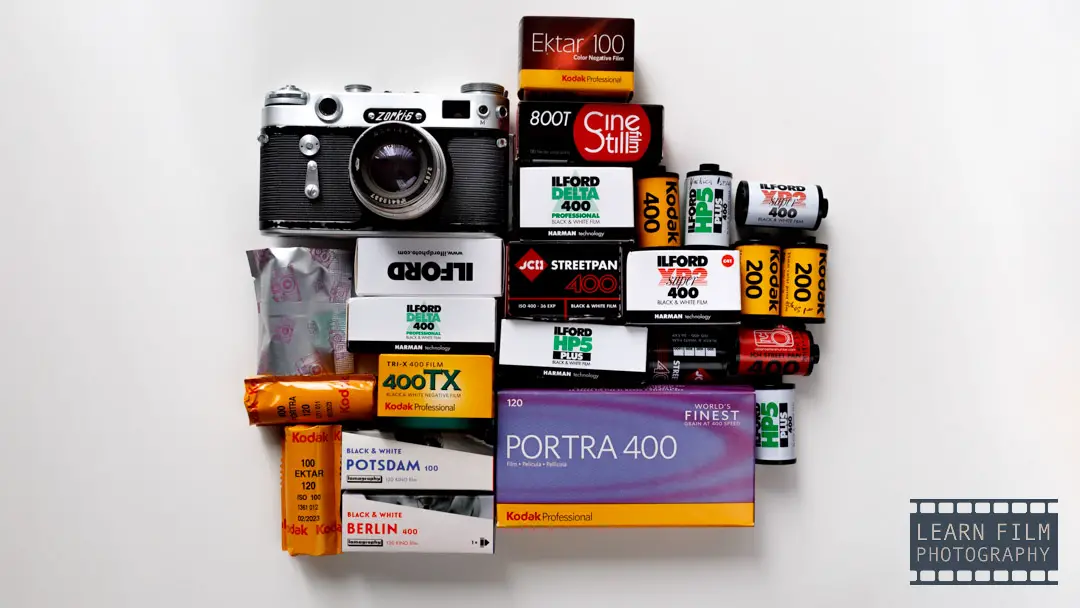
Film options are express to the highest-quality film stocks
This can exist a big factor for many photographers. There are all the same a big number of high-quality films bachelor for medium format cameras. Y'all can come across this list of the ten best film stocks that will still be bachelor for the foreseeable future.
But there aren't as many motion-picture show emulsions available for medium format as in that location are for 35mm. Part of that is considering smaller motion-picture show producers need to meet the biggest market before they invest in supplying the smaller number of medium-format photographers out at that place.
But another reason is that larger-format photographers are usually looking for high-quality emulsions over the fun types the like of which Dubblefilm or other manufacturers are creating.
Luckily, we still accept Lomography, who are taking some of the affordable flick stocks from Kodak and making them available for medium format (and even 110).
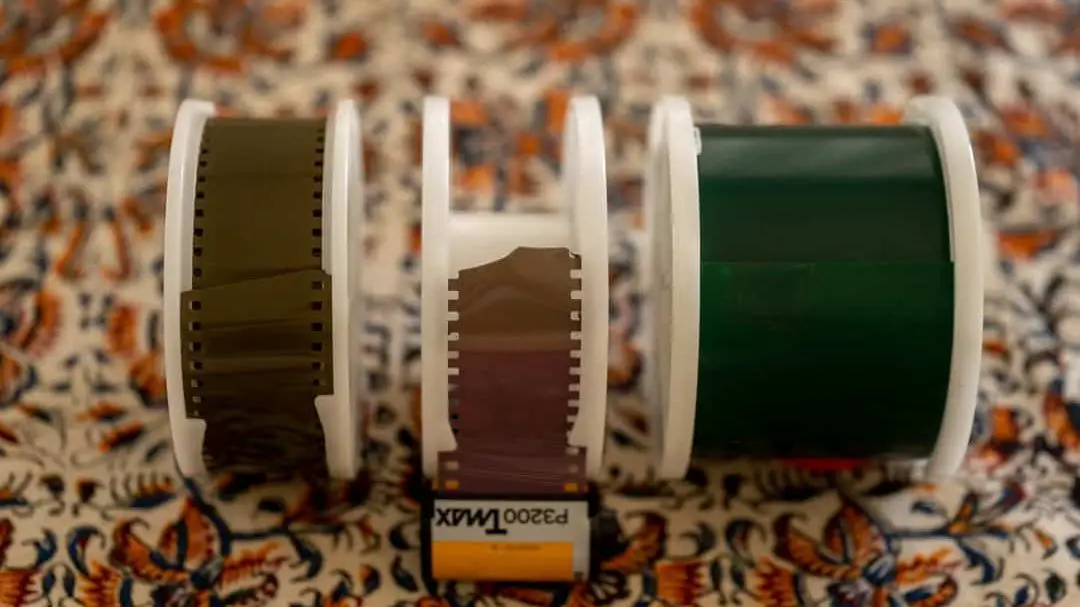
Getting medium format film developed
Larger flick formats are besides more difficult to take developed at a lab. Dorsum in the late 90s, there were small movie labs popping up in almost every pocket-sized corner you lot could find. But they were but developing 35mm color film because information technology was a standardized process that didn't demand large equipment.
Today the mural is much different. But there are yet labs at some places like Walgreens, Walmart, and Costco — or London Drugs in Canada. Merely if they exist in those stores, it is unremarkably in a limited chapters. They however by and large only develop 35mm.
For medium format, your all-time bet is always to become to a more specialized camera shop, or to mail service the pic into a lab.
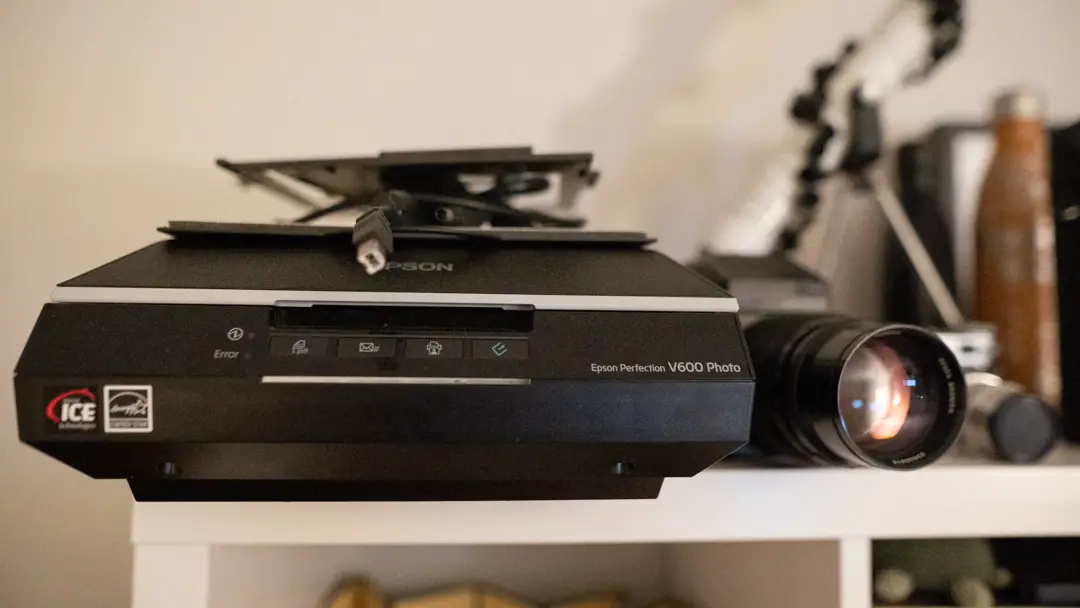
Scanning medium format
In the digital historic period, the movie type you use is realistically only as good as the digital scan, correct?
Having a good flick scanning setup at home takes some investment. The easiest style to get started is to use flatbed scanners, which perform much better with medium format than they do with 35mm. They can take a long time to use, but in general, you volition get expert results with i of these scanners. Detect them on Amazon for the best price here.
If you're shooting both 35mm and 120, and have a digital camera at dwelling I would suggest geting into film scanning with a DSLR. Raw files tend to make converting and editing the negatives much easier than working with the files a scanner volition give you.
The only downside to DSLR scanning is that when using a macro lens, subsequently cropping for the right aspect ratio, the film scan from a medium format negative is sometimes smaller than what you lot would get from 35mm.
This is considering a full-frame digital sensor is modeled after 35mm pic. In fact, the Sony sensor is wider than Canon or Nikon, considering information technology is modeled to exist the well-nigh like to a 35mm moving picture negative.
In one case y'all beginning scanning larger formats, the first result that you will come across is finding a scanning mask or film holder that will concur your film negative perfectly apartment. If the negative isn't flat, then the sides of the epitome volition be darker than the middle section, or the edges will be out of focus birthday.
There are enough of solutions that work well for 35mm, but it is always but a bit more than expensive and harder to find a good solution for medium format. I've been using the Essential Picture Holder for the past year, and accept gotten pretty proficient results with information technology. Merely there are always problems when the moving picture has a drastic curl, like when using films with a thin base like Lomo 800.
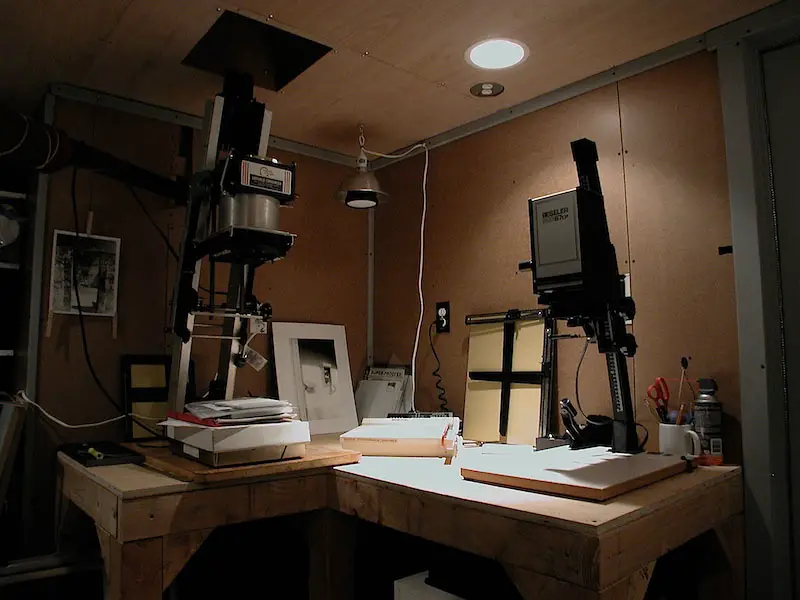
Darkroom printing with medium format motion picture
Back even 5 years ago, it was easy to detect enlargers online. Everyone was just trying to become these out of their basements. It didn't matter if it was a $500 machine or $10,000 — you could find them for free so long as y'all had the means to get them out.
But these days a good enlarger is getting harder to come by. Medium format enlargers are larger and have longer lenses than 35mm film. Most enlargers will have a 50mm enlarging lens, which is the right size for 35mm. For medium format film you will want a longer focal length lens like 75mm – 150mm.
While you technically can print a medium format film image with a 50mm lens, information technology volition go out lighter edges around your print. You will also want to stop down the lens 2x from the maximum aperture for the sharpest possible images.
These lenses require a larger enlarger in society to give you enough tiptop to make a skillful-size enlargement. The larger you lot desire the image to be, the college the enlarger will take to go. That ways many pocket-sized enlargers on the market place volition only be able to make 5×7 or 8×10 darkroom prints with medium format film. 16×xx prints may crave smaller focal length lenses, like 75mm.
The Learn Film Photography guide to choosing your first medium format camera
This is the section that we're all hither for. How practise you choose your first medium format camera? There are plenty of options out there that are all congenital for different users. Whether yous like rangefinders, SLRs, folding cameras, TLRs, or system cameras that can be adjusted to your specific needs, at that place will exist something out there for you lot.
In these sections, I'll give existent-world uses for each of the cameras, including who they are targetted to, and what they do best. Considering no ii cameras are the aforementioned.
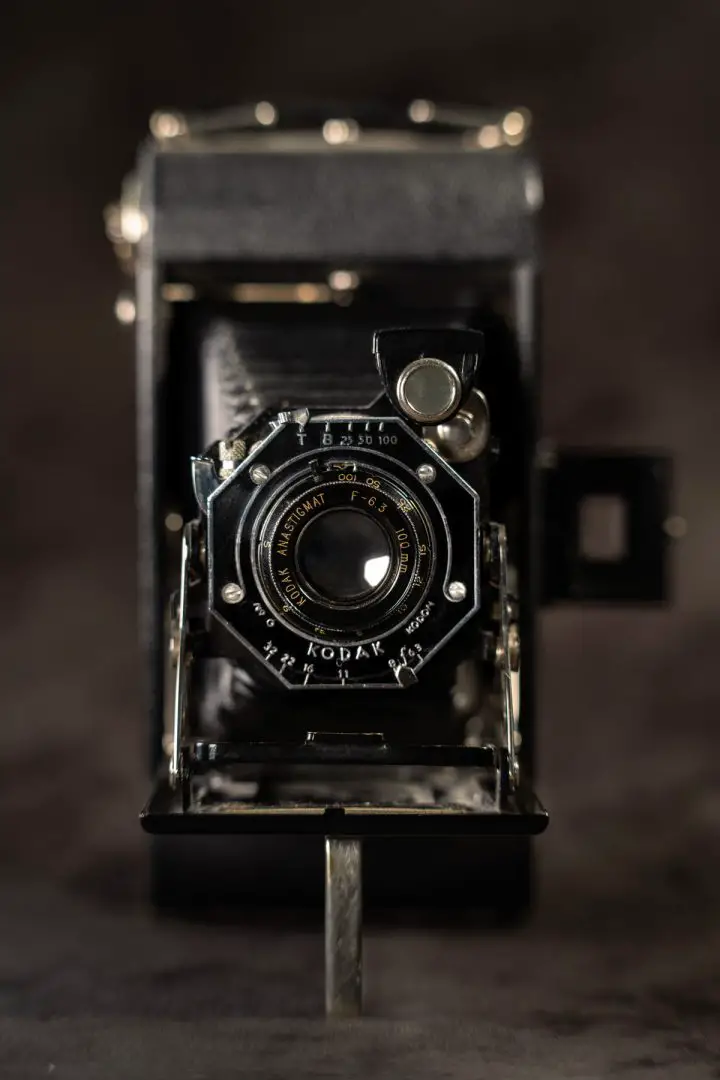
Which medium format cameras are the virtually affordable?
The most affordable medium format cameras are the toy cameras, like the Holgas or the Diana F+ cameras. These are fun, plastic cameras with plastic, fixed-focus lenses. They usually come with a flash and have a single shutter speed and aperture that works in daylight.
Because of the simple operation, these cameras permit you to merely focus on limerick. Many photographers, including famous landscape photographers like Michael Kenna have a soft spot for Holga cameras because of the unique look they tin can create. Every Holga or Diana camera is just a little chip different.
If yous notice a medium format film camera that is less than $40, chances are it uses a format that is no longer sold. Many of them, similar most Kodak Brownies, Contaflex, or the cool-looking Kodak Half-dozen-twenty camera all used 126 film, which is eerily close to 120, only merely slightly shorter. To utilize these cameras, you will demand to re-spool 120 flick onto 126 film spools.
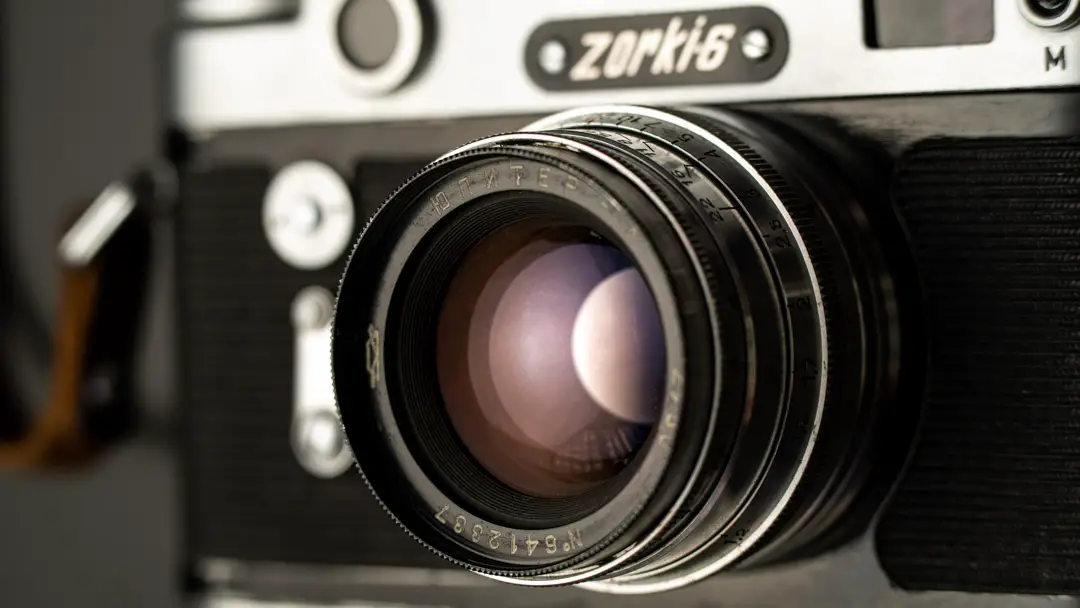
Are the Russian copies worth it?
The Russians made copies of many other famous cameras out there. Later existence cut off from supply during the wars, the Russians felt they needed to become cocky-sufficient and created many stunningly-similar copycat designs. These cameras are almost as proficient equally the real deal.
The next footstep upward from these toy cameras are usually the Russian medium format cameras, similar the Lubitel-166 LOMO plastic TLR camera (the photographic camera that started Lomography). These are quirky, with all-plastic structure. But they have adjustable exposure settings, a cool waist-level viewfinder, and can exist focused so you tin create bokeh. All in all, they're not going to produce the best image quality, but they are fun cameras to employ.
On the used marketplace, a Kiev 88 is an affordable copy of the Hasselblad 500 photographic camera system, with almost all of the pieces being interchangeable — except for the film back, unfortunately.
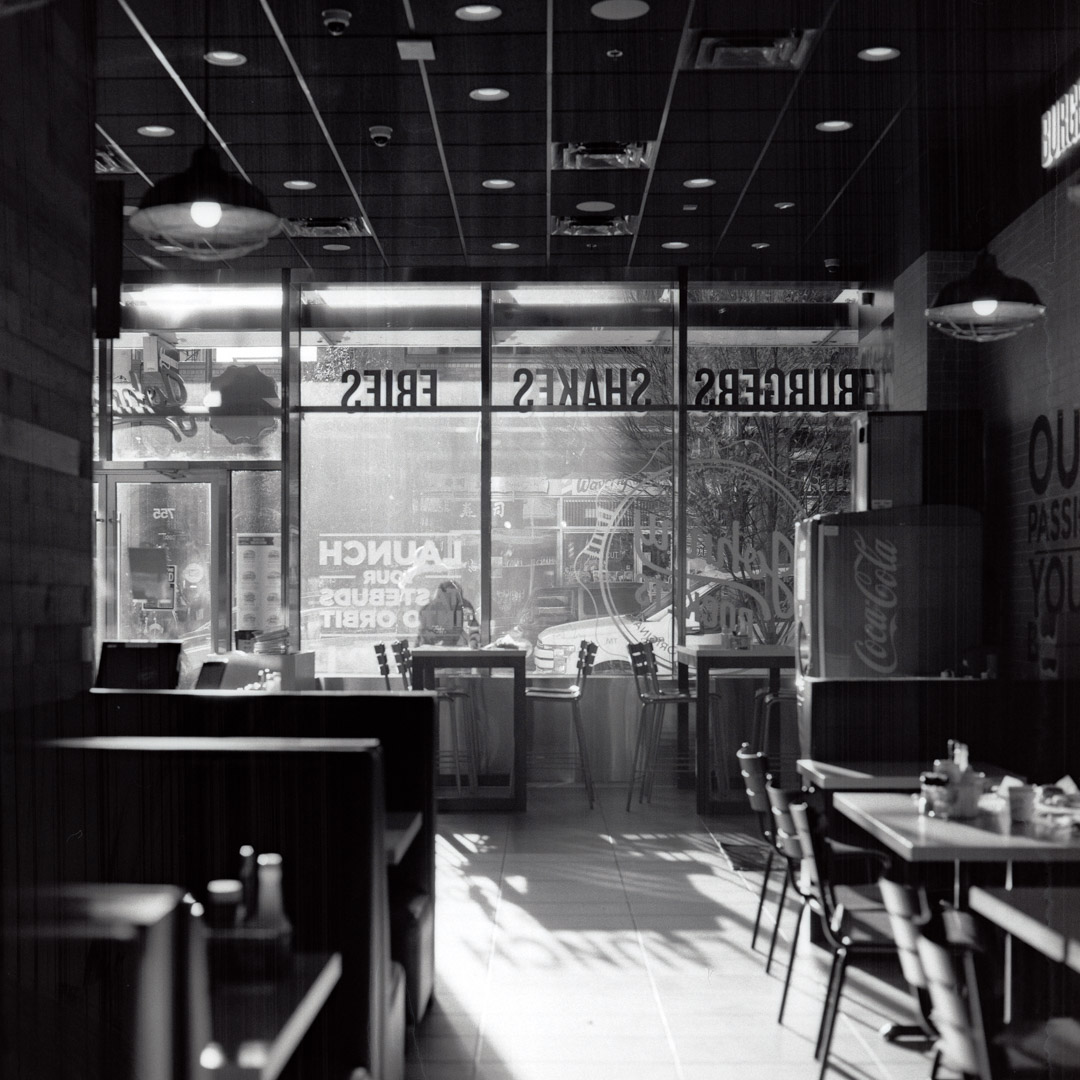
The Russian copies all do have their quirks, just they're solid cameras that can create A 500 series Hasselblad will easily ready you dorsum $2000 The states, but a expert condition Kiev 88 with an extra back costs merely 10% equally much.
If you can find a practiced, working copy of a Russian medium format photographic camera, it will near certainly be a great purchase — I remember many people steer clear of them, assertive that they're well-nigh all bad. Simply in my experience, the problems are a little overblown online. It'southward much easier to discover a expert working Russian photographic camera than many people let on.
If y'all practise purchase one, be sure to accept the photographic camera for a professional CLA, and the camera will proceed to outlast the USSR.
All in all, Russian cameras will treat you well. If y'all're looking into medium format on a budget, these cameras are definitely worth taking a look at — specially if you can purchase them in person.
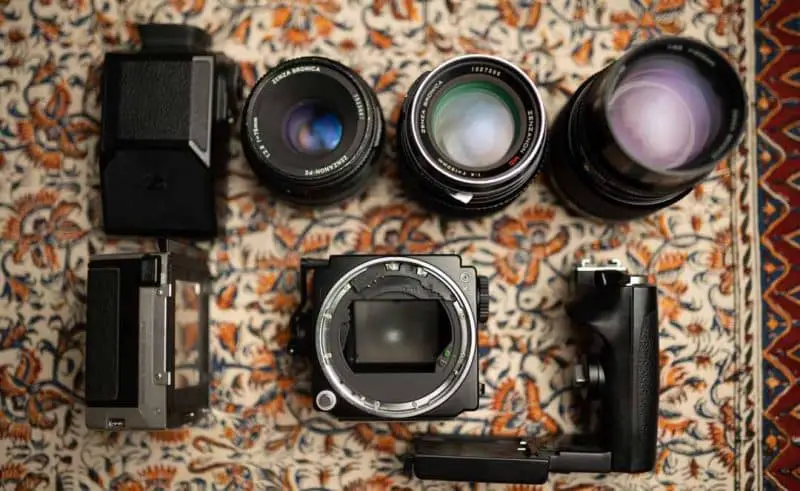
What is a system camera, and who are they meant for?
No guide to medium format photography could exist complete without talking most system cameras.
A system camera is whatsoever photographic camera that you can modify to your desired shooting mode. These cameras are built effectually an SLR body, which holds exchangeable film backs, a large diverseness of focusing screens, prisms (with or without lightmeters), waist-level finders, bellows, interchangeable lenses, and and so much more.
These cameras are loved by professionals because they tin be adapted to any mode that you choose. Hymeneals and portrait photographers love them because you tin can switch between color and blackness and white film without finishing and reloading a new roll. If you're shooting fast-paced events, you tin can preload multiple backs and switch them out at a moment'south discover.
Studio photographers beloved these cameras as well, considering they are reliable, and are designed to create the highest-quality images, and can be adjusted to use bellows for closeup photography, or take a variety of mounts that tin can exist added on for flash.
Hasselblad besides released a set of lenses that were optically designed for perfect prototype reproduction (no distortion or vignetting at the edges of the frame on wide-angle lenses) for studio product photographers also as scientists. These lenses are rare and can fetch prices into the $20,000s today.
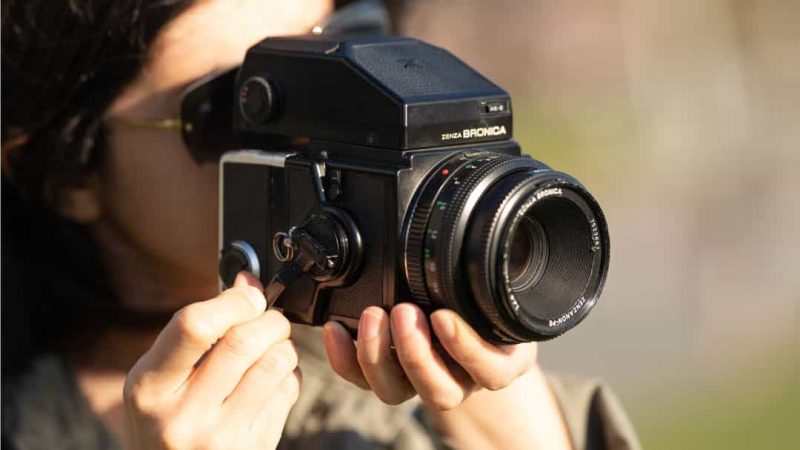
System camera prices
And not all of these cameras are expensive. In that location are, of course, the famously expensive Hasselblad 500 series cameras, the Mamiya RB or RZ 67, and Contax 645 camera systems. These cameras are absolutely worth their prices — especially the fully-mechanical bodies that are easier to maintain and repair.
About of the higher-ticket system cameras, like the Hasselblad 500 serial, and Contax 645 system cameras are fairly expensive. They come in at the $2000+ marking for the camera with a kit lens and moving picture back.
But in that location are as well much more affordable cameras, like the Zenza Bronica ETRS and ETRSi that seriously punch above their weight for the price. The lenses are tack sharp (and cheap!), and the systems piece of work extremely well. Of course, with more electronics does come more problems. Just overall, these cameras are undecayed, and they were the wedding photographer's dream photographic camera in the 80s for a reason.
But there are also options, like the legendary RZ67, a 6×vii format studio professional photographic camera, that can exist bought for $600 – $700. The larger negative (and rotating back) is something many photographers love to have for studio photography. But don't look to have this camera upward a mountain — the camera trunk lone weighs 1.4kg. Add together a lens and back will, and the RZ67 easily weighs over 2.5kgs!
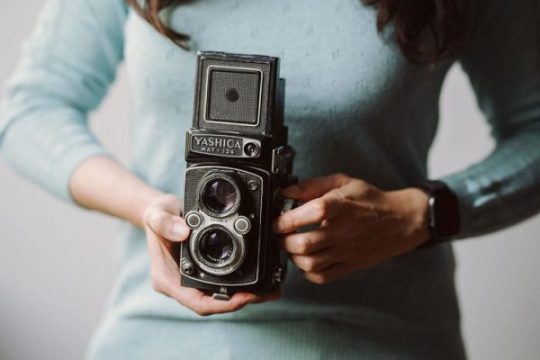
What is a TLR camera?
A TLR, or Twin Lens Reflex cameras are small, portable, and vintage-looking cameras. At get-go sight, these don't wait like anything you've ever seen. TLRs accept two lenses — 1 lens for viewing the image, and another ane merely below it for taking the prototype. These cameras utilize a waist-level viewfinder and take images in a square six×half dozen film negative.
TLRs became popular in the 1930s because of their reliability and ease of utilize. The form factor was peachy for street photographers who used the unassuming fashion of this camera to accept sneaky street photos. The lenses on these cameras are also ridiculously sharp for their age.
With a camera similar this that sits around your neck, it can be difficult to know if it'southward pointing at you. So people on the streets seem much more comfortable around these cameras — at to the lowest degree in the modern age.
Most Twin Lens Reflex cameras accept fixed lenses, and focus by moving the lens back and forth on a board, like the popular Yashica and Rollei cameras. The Mamiya C330 is the only TLR that tin actually exchange lenses, though information technology has a much larger and heavier form factor.
Unfortunately, most of these cameras are becoming quite expensive because of their growing popularity. The cameras are besides difficult to repair even though they are fully manual. The foliage shutter mechanisms are difficult for repairmen to admission and are known to struggle with historic period.
The Mamiya C330, however, still remains fairly affordable, despite having interchangeable lenses.
The Yashica Mat 124 was my offset film camera. I took it with me everywhere and got some really incredible images with it. The bright focusing screen made focusing easy, and the course gene of the TLR camera makes getting steady shots at deadening shutter speeds surprisingly easy.
Famous photographers who used TLRs
Many photographers throughout history loved the TLR camera.
I of the most notable recently is Viviane Maier, who was a nanny in New York who loved taking photos of annihilation and everything. Her work was only recently discovered, merely in information technology are many incredible street, mural, and cocky-portrait images that were all taken with her Rolleiflex TLR.
Even though Maier was a notably tall woman, all of the portraits were taken from beneath the bailiwick's point of view — an iconic type of photography that only happens naturally with a TLR Detect a book of her incredible photographs on Amazon hither.
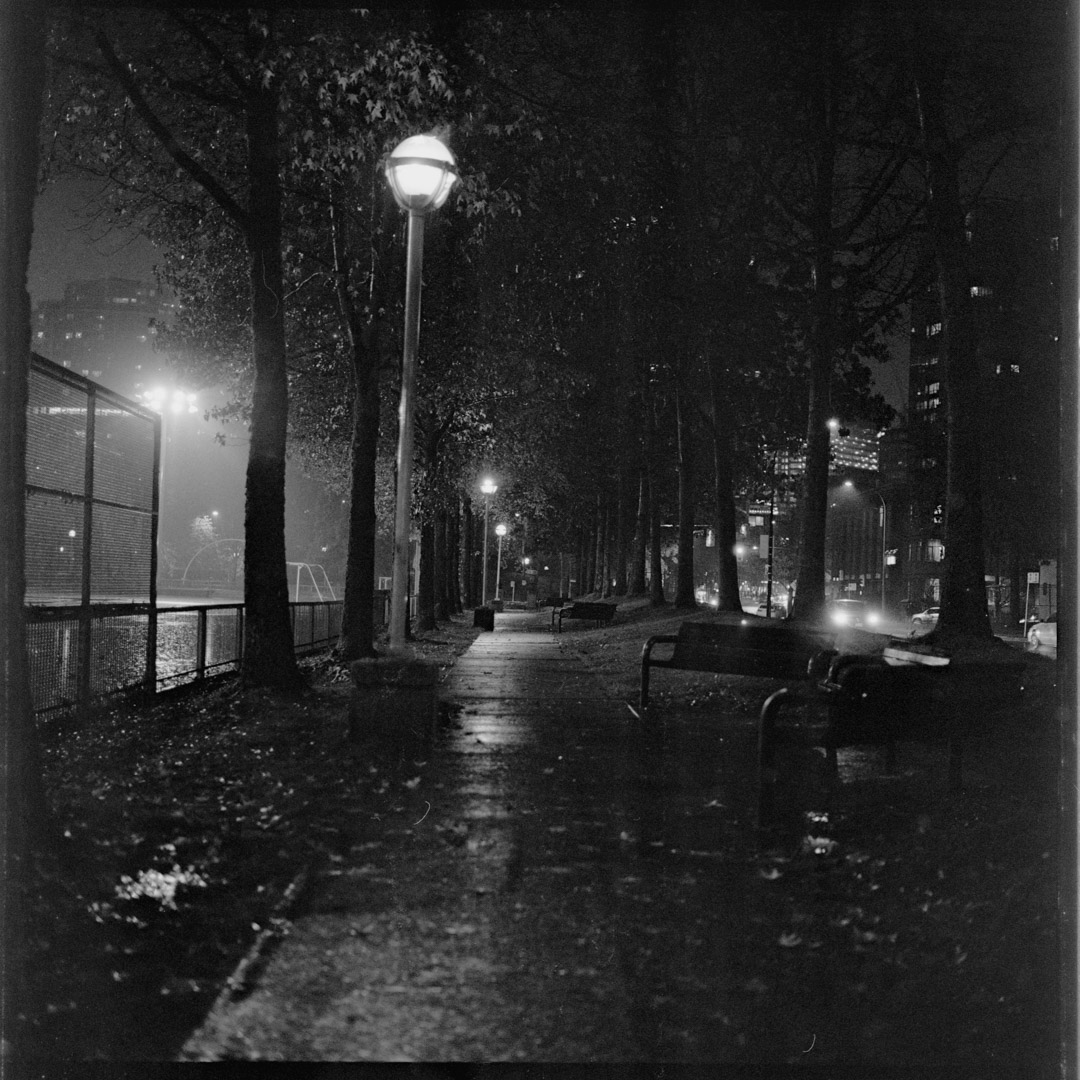
SLR versus Rangefinder medium format cameras
There are two main types of medium format cameras: SLRs and Rangefinders. These two systems are completely different from one another, and both accept their ain benefits and drawbacks.
SLR stands for Single Lens Reflex. SLRs accept a through the lens viewfinder so you can see exactly what the photographic camera sees — including depth of field. They are accurate and quick to focus. SLRs accept been the backbone of professional photography because of these benefits.
But SLR cameras do accept a mirror that they take to move out of the fashion before the image can exist taken. The mirror often moves extremely fast and so the lensman can capture the decisive moment. But the problem is that these mirrors are loud and can also cause some amount of shake in the images.
For long exposures, the milk shake will be small but it will brand the image noticeably less abrupt. The culling is to utilize mirror lockup. However, that mode prevents y'all from being able to see through the lens. The last issue is that an SLR viewfinder is just as bright as the lens that is on the camera. That means information technology tin be difficult to focus your epitome at night when using a slow lens, like an f/5.6.
Well-nigh cameras, including every organisation photographic camera, are SLRs because of their dependability. They don't demand to be calibrated, and they're typically actually good at what they practise.
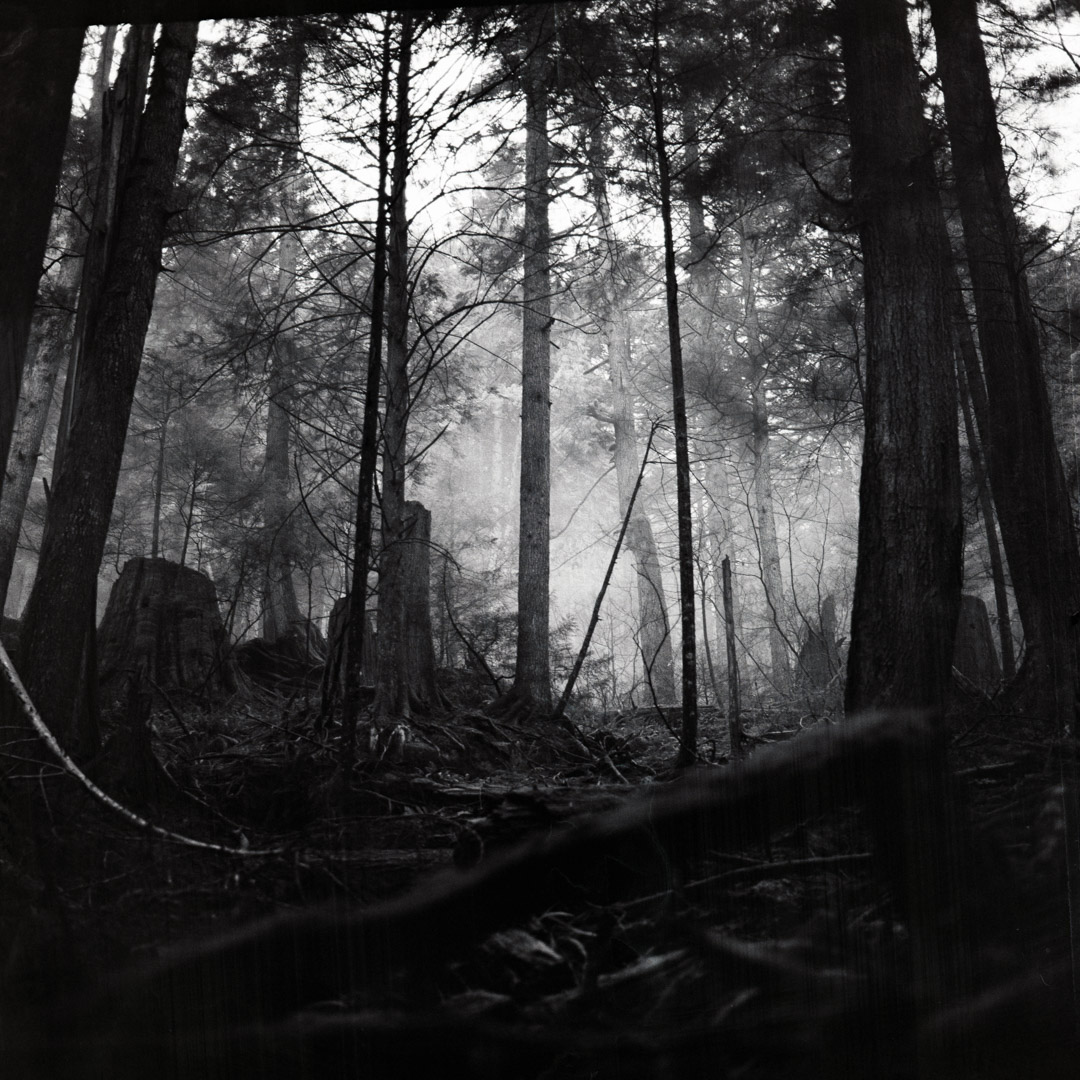
Rangefinders have a focusing system that is uncoupled from the lens. When you look at these motion picture cameras, they will have two screens — one is the main viewfinder, and the other has a focusing patch. When you lot focus the lens, at that place is a petty lever inside the camera that gets pushed, decision-making the position of the focusing patch in the camera.
The benefit of the rangefinder system is that it is elementary to use. You tin can tell chop-chop when something is in focus (then long as the camera is calibrated). These cameras as well don't have a loud mirror to move out of the manner with every exposure, making them a favorite for street photographers everywhere.
The downside of a rangefinder is that the focusing screen is not coupled to the lens, meaning you don't actually know what the film is going to meet. Most viewfinders accept a 30mm field of view, and some of them have frame lines that show approximately what the frame of your image is going to be.
Close-up portraits, practise, even so, endure from parallax error, where the image is taken from a lower angle than it looked in the viewfinder. Parallax error is especially bad with long focal length lenses.
If you're someone similar me who enjoys using long, telephoto lenses similar 135mm or 85mm, then these cameras tin can be difficult to know exactly how your prototype is going to look. As well, the focus on those lenses needs to be more precise. So most rangefinder photographers stick with 35mm.
Because of these downsides, at that place are but a scattering of medium format rangefinders. The about common one is the Mamiya seven and 7II. These are some of the most sought-later on medium format cameras on the marketplace, fetching a premium cost of above $3000 USD. A more affordable selection is the Fujifilm GA645. However, those cameras just utilise 1 lens that is fixed to the torso instead of interchangeable.
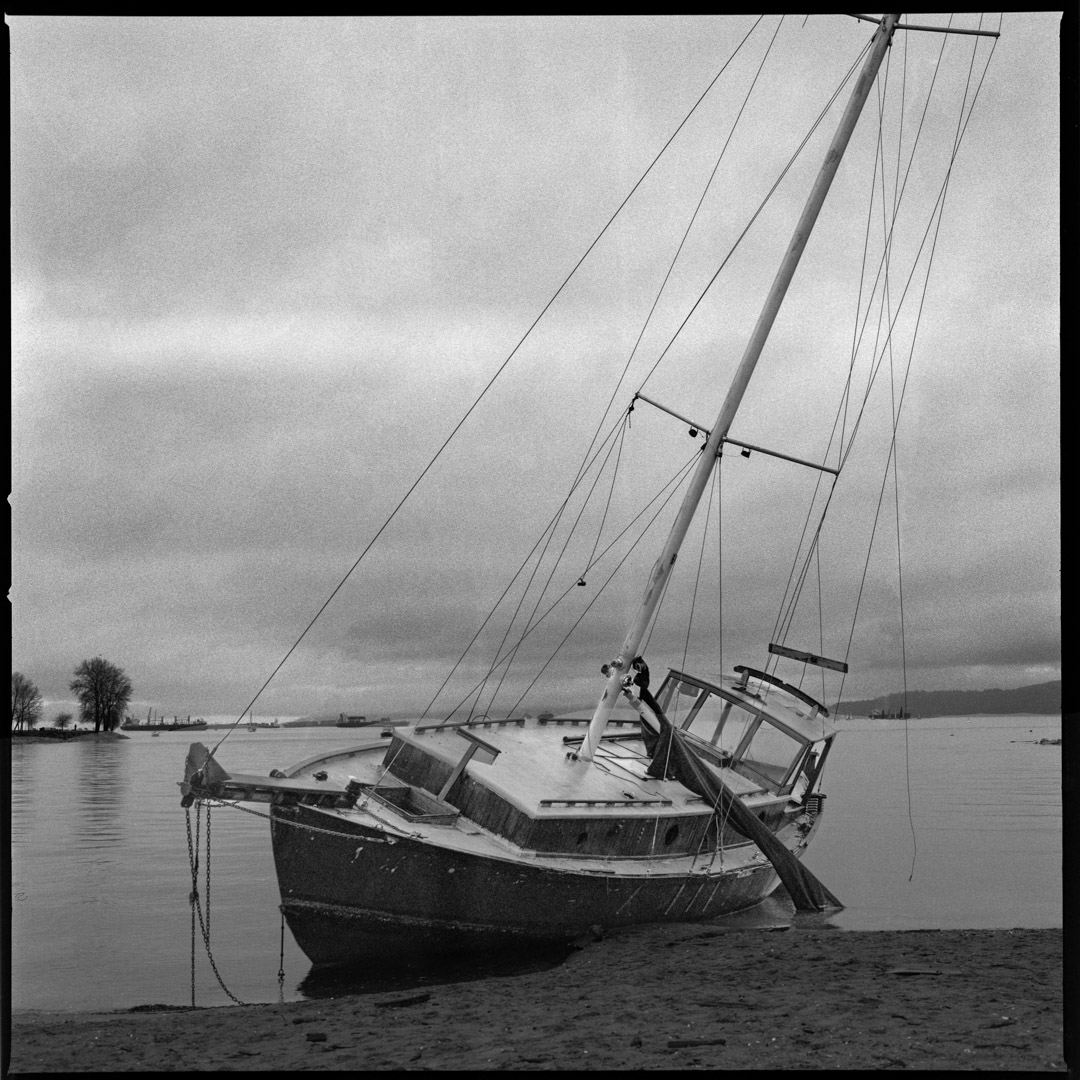
Terminal thoughts
In that location are so many reasons why photographers love medium format film photography. I personally have fallen in beloved with the Hasselblad that I've been using since September, and oasis't even wanted to choice up a digital or any other flick camera since.
But the reality is that but because you lot have the all-time photographic camera, doesn't mean yous are going to take the best photographs. Most of the best moving picture images in history were taken on 35mm cameras because of their form factor, ubiquity, and reliability. There are many cases where a small camera only does the trick better.
This is the longest guide I have ever written on the LearnFilm.Photography site. If at that place is anything specific that you lot want to know near medium format photography, or about any of the cameras, films, or other details in the article, please allow me know down in the comments below.
I dear hearing your feedback on my manufactures, and I practice my very best to answer questions equally speedily as possible. Only you tin also feel free to transport me a DM on Instagram or post in the growing Official Learn Motion picture Photography Facebook group!
Source: https://www.learnfilm.photography/guide-to-medium-format-photography/
Posted by: smithglight.blogspot.com

0 Response to "How To Use A Medium Format Camera"
Post a Comment